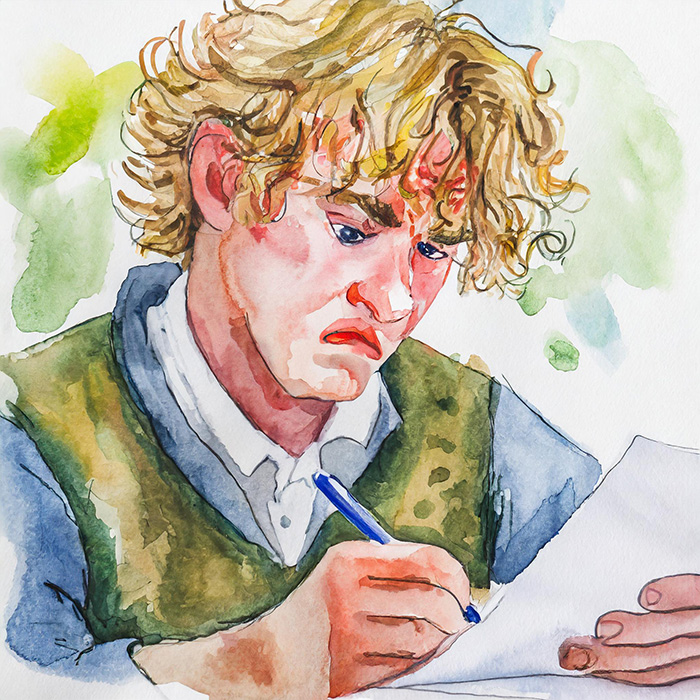Many people believe that you can’t be a successful graphic designer if you can’t draw. This belief has deterred many aspiring designers who feel their sketching skills are inadequate. However, this couldn’t be further from the truth.
While having drawing abilities can undoubtedly lend an advantage in the field of graphic design, it is by no means a prerequisite. In today’s digital age, there are numerous tools and software available that streamline the design process, requiring less reliance on traditional hand-drawing skills.
Reflecting on My Design Journey
Reflecting on the earliest steps of my journey, as I signed up for college courses, I remember being petrified about my future in graphic design due to my own perceived lack of artistic talent. The fear of not being the strongest artist convinced me that I would fail in this creative field, potentially derailing my dreams before they even took off.
However, as I delved into my graphic design courses and started working on projects, I quickly realized that being a successful designer goes far beyond just being able to draw. A graphic designer’s job is not solely about creating aesthetically pleasing illustrations; it’s about problem-solving and communicating ideas visually—a talent I had in droves.
Graphic designers are visual storytellers who use their skills to convey messages and information through various mediums. This requires a deep understanding of design principles, such as color theory, typography, and composition, which can be learned and honed over time.
Moreover, graphic design is a vast field with many different specializations. Some designers focus on web design, while others specialize in branding or packaging. Each area requires a unique set of skills and talents, and while drawing may be more useful in some, it’s not a crucial skill for all.
In fact, many successful graphic designers don’t consider themselves to be artists at all (including me). They rely on their creativity, critical thinking, and technical skills to bring their ideas to life. These are all essential qualities that can be cultivated through practice and dedication.
Essential Skills for Graphic Designers
A successful graphic designer needs a strong foundation in several key areas that extend well beyond the ability to draw:
- Typography: Understanding how typefaces work and how to use them effectively is crucial. Typography involves arranging type to make the text legible and appealing when displayed.
- Color Theory: A good grasp of color theory enables designers to create visually engaging designs. It helps understand how colors interact, complement, or contrast with each other.
- Layout Design: This involves organizing graphics, images, and text in a way that is both aesthetically pleasing and user-friendly.
- Communication: Perhaps one of the most fundamental skills, communication, is essential for understanding client needs, presenting ideas, and working effectively within a team.
The Importance of Knowing Typography in Graphic Design:
Understanding typography as a design skill is key because it significantly influences the overall impact of a design. Typography is more than just font choice; it’s a vital component of visual communication that can dramatically affect the design’s readability, mood, and message.
Poor typography can render the most well-crafted messages ineffective, while good typography can enhance and clarify these same messages. It’s a powerful tool that can help a designer create hierarchy, organize content, guide users, and enhance aesthetics.
Furthermore, typography can evoke specific emotions, set the tone for a brand, and even reflect its personality. Therefore, mastering typography is not merely about making text legible and appealing; it’s also about utilizing type as a dynamic vehicle to carry and strengthen the intended message. In this way, typography is indeed a fundamental skill for all graphic designers.
The Role of Color Theory in Graphic Design:
At its core, color theory involves the study of how colors interact and how they can be combined to create different effects. It is a set of principles used to create harmonious color combinations that are pleasing to the eye and evoke specific moods or emotions.
Color has a profound impact on how a design is perceived and interpreted. The right color scheme can strengthen a brand’s identity, guide the viewer’s eye, and highlight key information. Conversely, poor color choices can muddy a design, send mixed messages, or alienate the target audience.
Expert knowledge of color theory allows designers to create color palettes that align with a brand’s values, target audience, and messaging goals. It aids in creating visual hierarchies, guiding viewers’ eyes to key elements, and improving the overall user experience. Understanding the psychological and cultural connotations of different colors is also a crucial part of this skill.
Therefore, mastering color theory is not just about making designs look attractive—it’s about using color as a powerful tool to convey messages and elicit specific responses. From the calming blues of a health website to the energetic reds of a clearance sale banner, color is an essential component in the visual language of graphic design.
Understanding Layout and Composition in Graphic Design:
The layout and composition are fundamental elements of graphic design, playing a crucial role in how a design is perceived and understood. Layout refers to the arrangement of elements such as text, images, and graphics on a page. It involves deciding where to place these components and how much space to allot to each one, considering the overall flow of information.
Composition, on the other hand, is about how these elements interact with each other and the space around them. It involves balancing elements, creating a focus point, and maintaining a visual hierarchy to guide the viewer’s eye through the design.
Good layout and composition can make a design more engaging, effective, and user-friendly. They can enhance readability, emphasize important information, and create a visual journey that guides viewers through the content.
Understanding the principles of layout and composition—such as balance, alignment, contrast, proximity, and repetition—enables designers to create visually appealing designs that effectively communicate their intended message. From the placement of a logo on a business card to the layout of a complex infographic, these skills are key to creating designs that not only look good, but also fulfill their purpose.
The Role of Communication in Graphic Design:
A graphic designer’s role goes beyond creating beautiful designs; they are visual communicators. They need to understand their client’s needs and translate them into a design that communicates the desired message effectively. This requires active listening skills, empathy, and problem-solving abilities.
For instance, when designing a logo, a designer must understand the brand’s values, target audience, and market position. All these elements should be communicated through the design. This process involves much more than just drawing; it requires strategic thinking and effective communication.
But, Should You Become Better at Drawing?
Like expanding any skill, improving your drawing abilities can open up a wider range of opportunities. It allows you to explore different styles, experiment with various design elements, and communicate your ideas more effectively in the initial sketching phase. Drawing can also enhance your understanding of various aspects of design, such as composition, perspective, and the interaction of light and shadow.
However, it is important to note that being unable to draw should not discourage you from pursuing a career in graphic design. Graphic design is about visual communication and problem-solving using typography, imagery, and layout techniques. While hand drawing can be a useful skill, many successful graphic designers rely on other skills, such as digital design, color theory, typography, and, most importantly, the ability to understand and convey a client’s message effectively.
Therefore, while improving your drawing skills can be beneficial, it is not a barrier to becoming a successful graphic designer. The field of graphic design is wide and diverse, and there is room for a vast array of skills and talents.
Concluding Thoughts
In essence, graphic design is about presenting an idea effectively and appealingly, not merely showcasing artistic skills. While being able to draw can add another tool to a graphic designer’s toolkit, it isn’t a necessary skill for success in this field. After all, creativity comes in many forms, and graphic design is no exception.





0 Comments